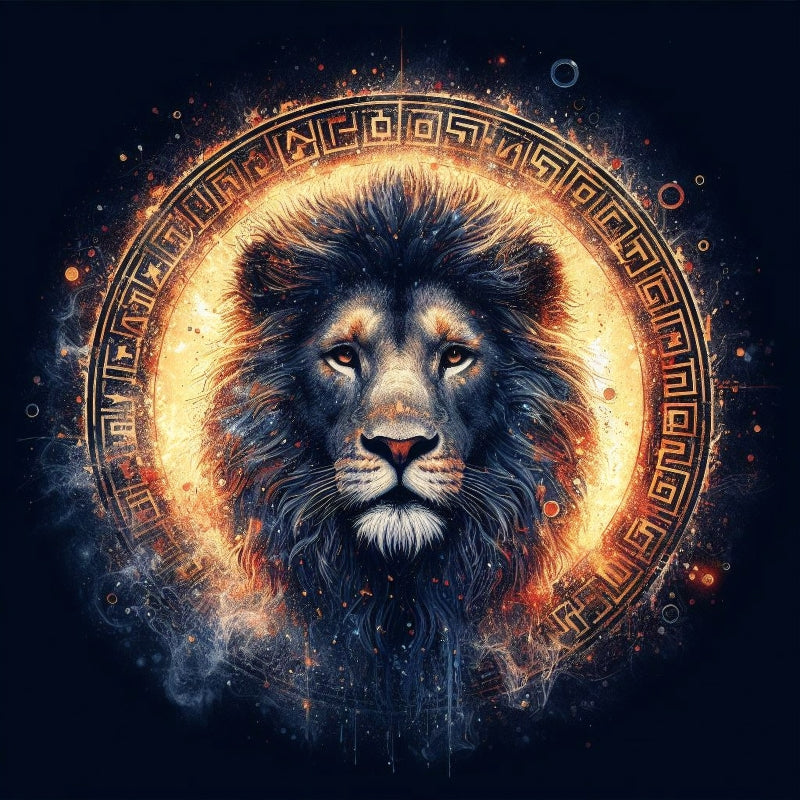
Why the Lion is the King of the Jungle
Share
The lion, often referred to as the "King of the Jungle," holds a prominent place in both wildlife and human culture. This title, however, can be misleading, as lions primarily inhabit savannas and grasslands rather than jungles. Despite this geographical discrepancy, the lion's regal status is deeply rooted in its biology, social structure, and cultural significance. This blog post explores why lions are considered the kings of the jungle, drawing on scholarly articles and authoritative sources to provide a comprehensive understanding.
- The Misnomer: King of the Jungle
The phrase "King of the Jungle" is a misnomer that has persisted through literature and popular culture. Lions do not typically reside in jungles; instead, they thrive in open savannas and grasslands where they can hunt effectively. The term "jungle" itself is derived from the Hindi word "jangal," meaning uninhabited land or wilderness, which has contributed to the confusion surrounding this title. Historically, lions were once found across various regions, including Europe, Asia, and Africa. Today, their range has significantly diminished, with populations primarily concentrated in sub-Saharan Africa and a small population in India’s Gir Forest National Park. The title "King of the Jungle" likely arose from the lion's majestic appearance and its role as a top predator within its ecosystem.
- Physical Attributes
Lions possess several physical traits that contribute to their regal status:
- Size and Strength: Adult male lions can weigh between 330 to 550 pounds (150 to 250 kg) and measure up to 8 feet (2.4 meters) in length, including their tails. Their impressive size and muscular build enable them to take down large prey.
- The Mane: One of the most distinctive features of male lions is their mane. This impressive tuft of hair serves multiple purposes: it provides protection during fights with rival males and acts as a visual signal of health and virility to potential mates. The darker and fuller the mane, the more attractive it is to females.
- Social Structure
Lions are unique among big cats due to their social nature. They live in groups known as prides, which typically consist of related females, their offspring, and a coalition of males. This social structure offers several advantages:
- Cooperative Hunting: Lions are known for their cooperative hunting strategies. Female lions often hunt together in groups to take down larger prey such as buffalo or zebra. This teamwork increases their chances of success compared to solitary hunters like tigers.
- Territorial Defense: Male lions play a crucial role in defending their pride's territory against intruders. Their powerful roars can be heard up to 5 miles (8 kilometers) away, serving as both a territorial marker and a means of communication within the pride. This vocalization reinforces their dominance over other animals in their habitat.
- Ecological Role
As apex predators, lions play a vital role in maintaining ecological balance within their ecosystems:
- Prey Regulation: By hunting herbivores such as antelope and wildebeest, lions help regulate prey populations. This prevents overgrazing and ensures that vegetation remains healthy—an essential aspect of maintaining biodiversity within savanna ecosystems.
- Scavenger Support: Lions also contribute to scavenger populations by leaving behind carcasses after feeding. These remains provide food for various scavengers like hyenas and vultures, thereby supporting other species within the ecosystem.
- Cultural Significance
Lions have long been revered symbols of power and nobility across various cultures:
- Historical Representation: Throughout history, lions have been depicted as symbols of strength and courage in art, literature, and heraldry. They appear on coats of arms and flags around the world, representing bravery and leadership.
- Mythology and Folklore: In many cultures, lions are associated with deities or heroic figures. For example, in Hindu mythology, the goddess Durga is often depicted riding a lion or tiger, symbolizing her power over evil forces.
- Conservation Status
Despite their iconic status, lions face significant threats that jeopardize their populations:
- Habitat Loss: Urbanization and agricultural expansion have led to habitat destruction for lions. As human settlements encroach upon lion territories, conflicts arise between humans and wildlife.
- Poaching: Illegal hunting poses a serious threat to lion populations. Trophy hunting has raised ethical concerns about conservation efforts aimed at protecting these majestic creatures.
Efforts such as conservation programs focused on habitat preservation and community engagement are crucial for ensuring the survival of lion populations.
- The Lion vs. The Tiger
While both lions and tigers are apex predators with similar ecological roles, there are key differences that contribute to the lion's title as king:
- Social Behavior: Lions are social animals that live in prides while tigers are solitary creatures. The cooperative nature of lion prides allows them to work together effectively for hunting and territory defense.
- Cultural Perception: Lions have historically been associated with royalty and power across various cultures more than tigers. This perception has contributed significantly to their status as kings within human consciousness.
- Symbolism in Modern Culture
In contemporary society, lions continue to symbolize strength and leadership:
- Media Representation: Lions are often portrayed as noble characters in films such as Disney's "The Lion King," which reinforces their status as kings among animals. Such portrayals have cemented their image in popular culture.
- Conservation Icons: Lions serve as flagship species for conservation efforts aimed at protecting wildlife habitats globally. Their iconic status draws attention to broader environmental issues affecting ecosystems around the world.
- Roaring for Dominance
Lions possess one of the loudest roars among big cats—a powerful vocalization that serves multiple purposes:
- Territorial Marking: A lion's roar establishes its presence within its territory while warning off potential intruders. This vocal display reinforces social hierarchies within prides.
- Communication Tool: Roaring also facilitates communication among pride members over long distances—essential for maintaining cohesion within social groups.
- Conclusion
The lion's title as "King of the Jungle" may stem from historical misconceptions about its habitat; however, it remains an enduring symbol of strength, power, and leadership across cultures worldwide. With its impressive physical attributes, social structure, ecological role, cultural significance—and not least—their powerful roar—the lion embodies qualities associated with royalty.
As we continue to explore our relationship with these magnificent creatures through conservation efforts aimed at protecting them from threats such as habitat loss or poaching—it is essential that we recognize why they hold such an esteemed place not only within nature but also within human consciousness. In celebrating this regal animal—the king among beasts—let us commit ourselves not only to safeguarding its future but also ensuring that future generations will continue marvelling at these incredible beings roaming freely across savannas around our planet!
Citations:
[1] https://blog.byjus.com/early-learn/why-is-the-lion-the-king-of-the-jungle/
